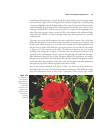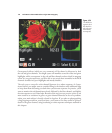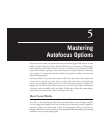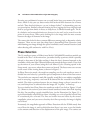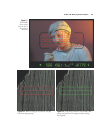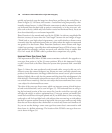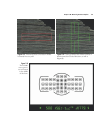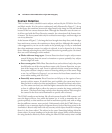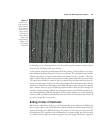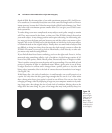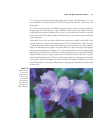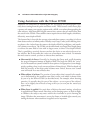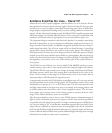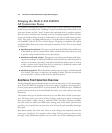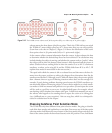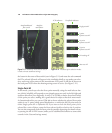
be focusing on, by choosing a focus zone or by allowing the camera to choose a focus
zone for you. I’ll address that topic shortly.
As the camera collects focus information from the sensors, it then evaluates it to deter-
mine whether the desired sharp focus has been achieved. The calculations may include
whether the subject is moving, and whether the camera needs to “predict” where the
subject will be when the shutter release button is fully depressed and the picture is taken.
The speed with which the camera is able to evaluate focus and then move the lens ele-
ments into the proper position to achieve the sharpest focus determines how fast the
autofocus mechanism is. Although your D7000 will almost always focus more quickly
than a human, there are types of shooting situations where that’s not fast enough. For
example, if you’re having problems shooting sports because the D7000’s autofocus sys-
tem manically follows each moving subject, a better choice might be to switch Autofocus
modes or shift into Manual and prefocus on a spot where you anticipate the action will
be, such as a goal line or soccer net.
Adding Circles of Confusion
But there are other factors in play, as well. You know that increased depth-of-field brings
more of your subject into focus. But more depth-of-field also makes autofocusing (or
manual focusing) more difficult because the contrast is lower between objects at dif-
ferent distances. So, autofocus with a 200mm lens (or zoom setting) may be easier than
at a 28mm focal length (or zoom setting) because the longer lens has less apparent
Chapter 5 ■ Mastering Autofocus Options 139
Figure 5.7
Focus in Con-
trast Detection
mode evaluates
the increase in
contrast in the
edges of sub-
jects, starting
with a blurry
image (top)
and producing
a sharp, con-
trasty image
(bottom).



